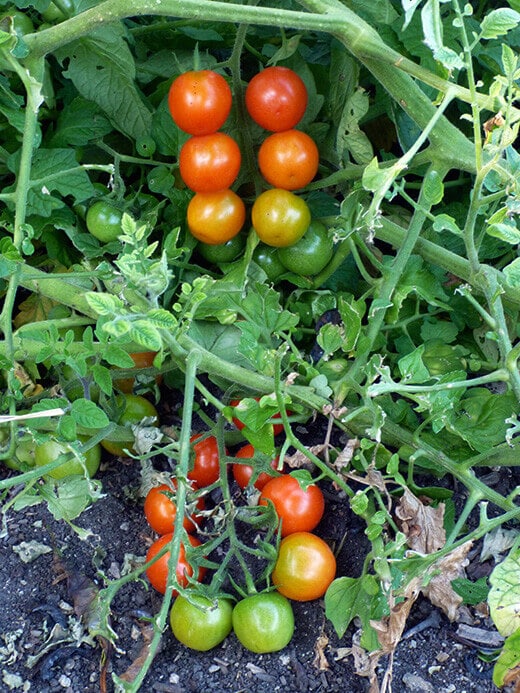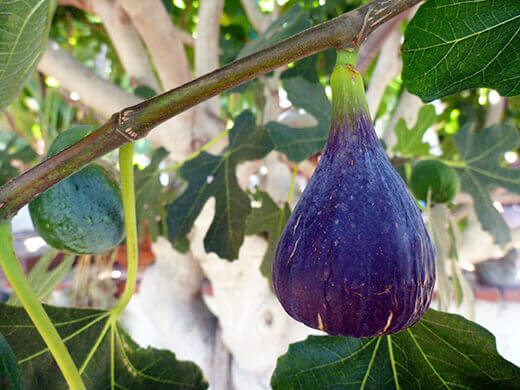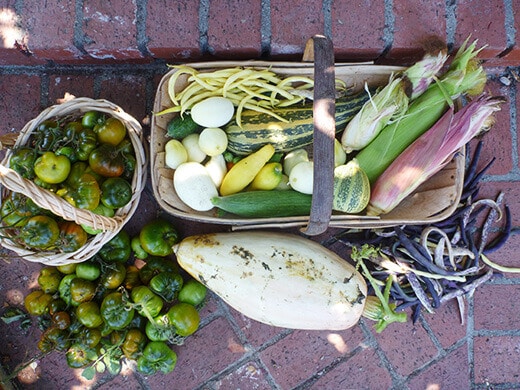Last week, I came home to an overflowing garden after spending five days in the mountains. I’m convinced that as soon as I leave town and stop “supervising” my veggies, they decide to have a growth spurt overnight.
That ginormous squash? I swear that it wasn’t there the week that I left. But when I trimmed off a few leaves affected by powdery mildew, I found the 15-pound cucurbit (aptly named Jumbo Pink Banana squash) dangling off a vine in the corner.
A tomato plant that I’d had in the ground since last summer finally petered out, and with it came an armful of unripened green tomatoes, which I can’t wait to pickle.
But not all of those green tomatoes are unripened. A number of them are healthy fruits from the naturally green varieties Emerald Apple and Green Doctors, and are just as sweet and rich as any ripened red tomato. (In hindsight, I’m not sure I would grow many more green varieties next season, as it’s too hard to tell when they’re ready… I end up going around my garden, groping all my tomatoes to feel for ripeness.)
Elsewhere in the garden, I can barely keep up with the regular red tomatoes! The cherry tomatoes are especially prolific, and I have a feeling I’ll need to clear out some space in the freezer to preserve the basket loads I bring in every week.

This summer, I grew six different kinds of cucumbers, including a new favorite, Metki Painted Serpent melon. This Armenian variety, though technically a melon, is eaten like a cucumber and has a delicious (and classic cucumbery) flavor.
I also picked fresh ears of Country Gentleman sweet corn off my 9-foot-tall plants for the grill. With recent approval of Monsanto’s genetically-modified sweet corn (a variety sold under the company’s Seminis Performance Series), commercial farmers began planting the GMO sweet corn last fall, so you might have seen it in stores this year. Unfortunately, there’s no way of knowing whether store-bought corn is genetically modified unless you ask the store, since they’re typically not branded. If you’re able to grow your own sweet corn at home, don’t take that simple pleasure for granted.
And just the other day, I spotted a sweet sign that summer is in full swing: my first ripe fig of the season!

















I just discovered your blog while researching “climbing spinach”; I have some in my garden and I was not sure what to do with it and its slimy taste. I just saw your compost photo with the worms and freaked out! lol. I desperately want to make my own for next year, how do I do this when I fear worms?
Climbing spinach is best eaten raw in a salad with other greens. If you cook them, they become a tad “okra-like” (slimy) – but this could be good for soup.
It doesn’t really make sense to make vermicompost if you fear worms, since you have to get up close and personal with the worms you’re caring for. Just make a normal compost pile that decomposes via heat and bacteria.
Groping your tomatoes? You pervert, LOL!
Are all of your vegetables grown from seed? Where do you source it from?
Yes, I get most of my seeds from http://rareseeds.com and some of my Asian seeds from http://kitazawaseed.com.